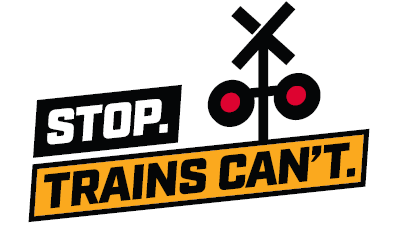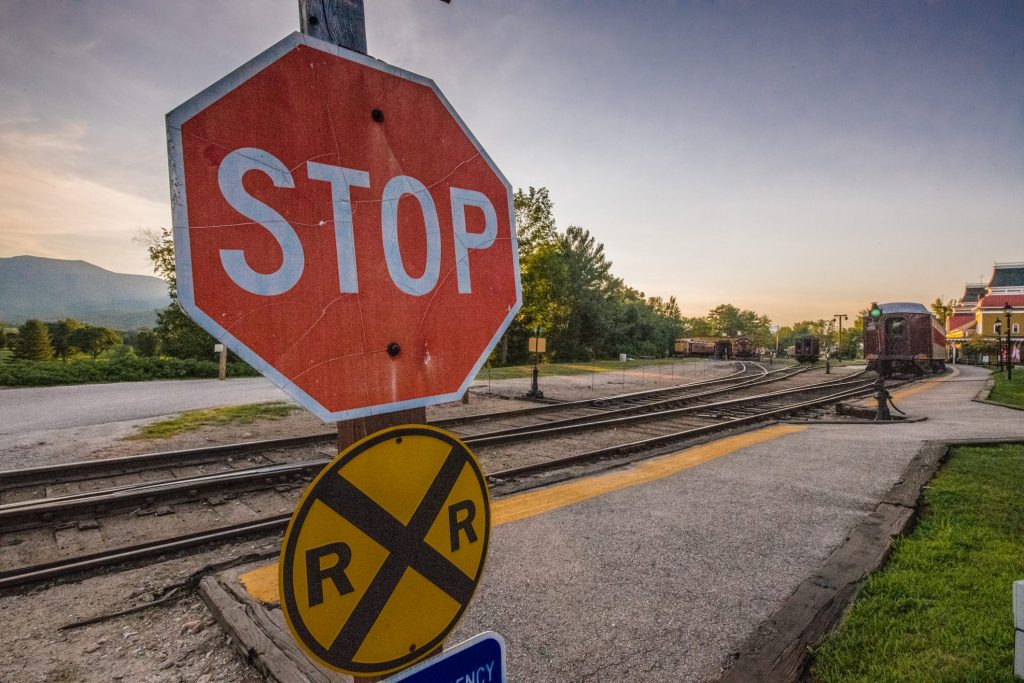
Do you ever find yourself thinking about railroad safety? Probably not, yet many of us must cross railroad tracks to get to our destination on a weekly basis. Railroad crossing incidents and fatalities continue to be a long-standing problem, but they are easily avoidable. Trains cannot swerve, stop quickly or change directions to avert collisions, so motorists, pedestrians, and cyclists must always be alert. It can take a freight train traveling 55 miles per hour a mile or more to stop after emergency brakes are applied—the length of 18 football fields. Every three hours a person or vehicle is hit by a train in the US. We must remember to slow down, be cautious and Stop. Trains Cant.


- ALWAYS EXPECT A TRAIN! Freight trains do not follow set schedules
- Check that you have enough room: on the other side of the tracks before crossing
- Look and listen: don’t rely on hearing a train horn, operators do not always use it
- Never stop on the tracks: if car stalls exit immediately

- Cross at designated railroad crossings: such as crosswalks or overpasses
- Stay alert: when crossing railroads or standing near the platform – it is easy to get distracted by phones music and conversation
- Never stop on the tracks: it is illegal to walk along or play on the tracks
- Cross at a 90 degree angles: with bike, stroller or wheelchair to avoid wheels getting stuck

- Cross at designated railroad crossings: with crosswalks flashing red lights or a gate
- Walk, Don’t Ride Across Tracks: wheels can get caught between the rails
- Be cautious of weather: wet train tracks can be slippery, dismount and walk your bike across the tracks
- Watch out for second train: wait after the first train passes until you can see clearly in both directions.

